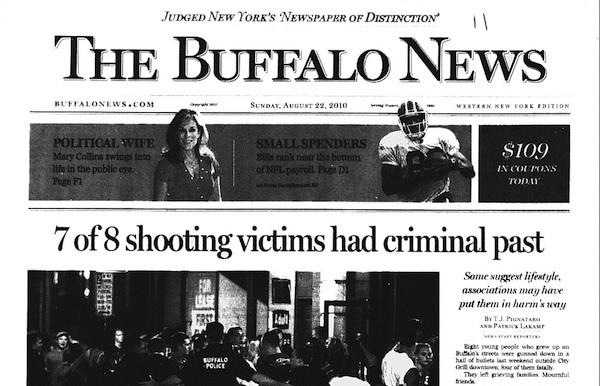

Editor’s Note: Our colleagues upstairs at Nieman Reports are out with their Summer 2012 issue, “Truth in the Age of Social Media,” which focuses on issues like verification, crowdsourcing, and citizen journalism. We’ve been giving you a glimpse at some of their stories, but make sure to read the issue in full. In this piece, Buffalo News Editor Margaret Sullivan — who was announced Monday as The New York Times’ new public editor — reflects on victims in the media, and the tension between journalistic sensitivity and a desire to be provocative.
As I watched media coverage of the racially charged shooting death of Trayvon Martin in Florida earlier this year, I found myself thinking about sensitivity and respect. Those issues were big ones for me and The Buffalo News in New York two summers ago.
As Geraldo Rivera of Fox News declared that black teens should avoid wearing hooded sweatshirts and some spectators gleefully welcomed revelations about Martin’s less-then-angelic past behavior, all of the questions came flooding back. How can we best avoid blaming the victim? Doesn’t the public have the right to know all the facts, not just the ones that support a particular point of view? How do placement and emphasis (in newspaper terms, a front-page headline versus three paragraphs at the end of a story) figure into media decision-making? How does the desire to be provocative (consider Rivera’s March 22 tweet: “His hoodie killed Trayvon Martin as surely as George Zimmerman”) weigh against responsible commentary and reporting?
As race-oriented stories continue to emerge—and they surely will—those questions deserve to be thought about and talked about in newsrooms. And we can do that most effectively if we broaden the base of those in our conversations, recognizing that diversity is more than numbers; it’s the power of what happens when different voices are truly heard. This reality was brought home to me in the aftermath of the furor that erupted in Buffalo’s black community over a story the News published in August 2010.
The bloodiest crime in the city’s recent history began as a wedding party. Actually, it was a year-after-the-wedding party for a Buffalo couple who had moved to Texas and married there but had come back to celebrate with hometown friends. The setting was City Grill, an upscale restaurant downtown.